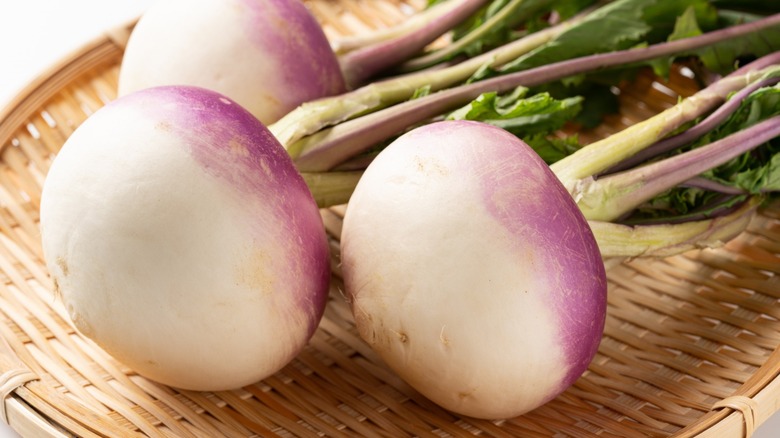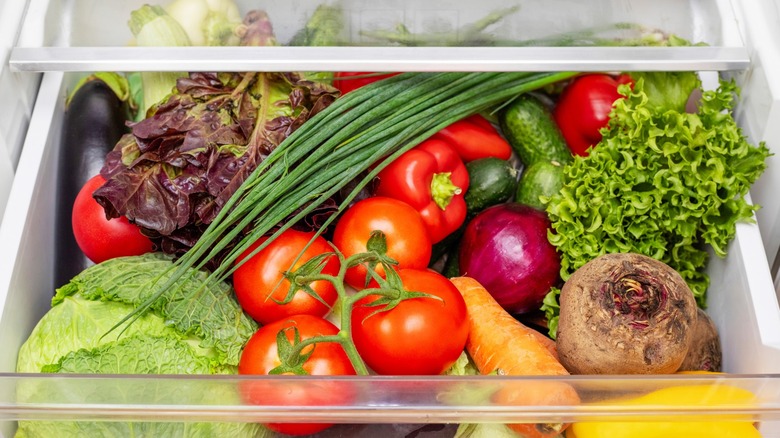What To Look For When Picking Out The Freshest Turnips
Turnips may not grab the spotlight like more popular root vegetables like potatoes and carrots. However, they still hold their own as a versatile and nutritious vegetable. Understanding what to look for when selecting them at the grocery store can make a significant difference in your cooking and eating experience.
First and foremost, size is a key factor. Typically, smaller turnips (the younger versions) are sweeter and more tender. These are the ones we recommend adding to your shopping cart. In contrast, larger turnips are more mature and tend to have a tough, woodier texture, and a more pronounced flavor. Regardless of their size, however, the turnips you choose should feel notably heavy for their size and have a firm texture. If you gently squeeze it, there should be no give.
Another important aspect is the turnip's appearance. Look for bulbs with smooth, unblemished skin free of cuts, bruises, or soft spots. These imperfections can indicate spoilage or poor quality. The color of the turnip can also give clues about its freshness. Turnips typically have a creamy white color with or without a purple hue near the top, where the root meets the greens. A vibrant color indicates that the turnip is fresh.
Finally, don't forget to check the turnip's greens if they are still attached. They should look lively and green, without any yellowing or wilting. This not only signals the freshness of the greens themselves but also of the turnip root.
How to properly store turnips
Proper storage is crucial to maintaining the freshness of turnips. When stored correctly, these vegetables can last several weeks, ensuring you have a fresh supply for your cooking needs. Once you bring your turnips home, the first step is to separate the greens from the roots if they are still attached. The greens can draw moisture from the root, causing it to lose firmness and freshness faster. Store the greens as you would other leafy vegetables — in a plastic bag in the refrigerator's crisper drawer. They are best used within a few days.
For the turnip roots, the ideal storage method depends on how soon you plan to use them. If you intend to use them within a couple of weeks, simply place them in a plastic bag and store them in the refrigerator's crisper drawer. This will keep them fresh and crisp.
If you need to store turnips longer, freezing is the best option. First, you'll need to wash, peel, and cut them into cubes, then blanch them. Next, arrange them in one layer on a lined baking tray and flash freeze. Once they've hardened, transfer them in freezer bags and store them in the freezer for eight to 10 months.

